"...because today, with cameras as pervasive as they are, there is no such thing really as professional photographers." -Marissa Meyer
Before you get irate, I don't actually agree at all with that quote above; I have no talent for photography at all and a tremendous respect for those who do, and who cultivate it to produce something beautiful. So this weekend, the most appropriate song I could find for you was by a group known as Camera Obscura, and their rather dark ballad,
Why do I bring up photography today? Because one of my blog's biggest fans, Felicity, runs a fun little astronomy corner of the web known as Stargazy Island, and decided to hold a photography contest for Earth's nearest natural satellite and the only other location humans have set foot on: the Moon.
Throughout the month of May, she received well over 100 submissions -- and you can view them all here -- and she asked me if I would be willing to be a judge for the contest, and pick my two favorites as winners. Well, of course I was more than happy to do so, because it also meant I got to view well over 100 wonderful compositions, by professionals and amateur enthusiasts alike. Below, with her permission, are my 17 favorite entries. See if you don't enjoy the wonderful diversity and high quality of these varied photos -- presented in their order-of-submission -- and see if you can guess which two would be my chosen winners before you get to the end! (As always, click on each photo for the highest-quality version available.)
Entry #11: James Lennie's daytime photo of the Moon, with an airplane and its contrails. The clear blue sky, the small, faint crescent and the airplane headed right into it almost give the illusion of a bowshock, and this was the very first one of the entrants that made me pause and say, "wow" to myself.
Entry #18: Howard Godkin's composition of the full Moon rising over the treetops in a post-sunset sky. This is one of my favorite times of the day: the dusky twilight, significantly after sunset but before the ebony backdrop of night has fully taken over. The yellow/orange color of the Moon is due to atmospheric refraction of light, while the wispy, horizontal clouds really add depth to this scene for me.
Entry #20: Howard Godkin's moonrise as seen through the spring buds of what appears to be hawthorn. All of my photos of the full Moon -- like this one -- just wind up giving me an overexposed circular disk, but the colors and lighting here give the illusion of a dim Sun, which I suppose the Moon appears to be, from a certain point of view. Very cool!
Entry #26: Mary Spicer's shot of a setting crescent Moon. Appearing similar to a partially eclipsed Sun, the colors of the sky aren't quite right for that. This is because the Sun has already set, just a little earlier and farther to the north (if I have my orientation correct) relative to where the Moon is in this picture. Seeing a photo like this always makes me think of the intricate geometry of the Earth, Sun, and Moon, and how all three must be positioned relative to one another to produce a scene such as this.
Entry #44: Mary Spicer's moonrise through the leaves. Again, a simple overexposed disk looks phenomenal because of the living objects it silhouettes. A very clever composition indeed!
Entry #50: Sarah Fisher's setting crescent Moon with the entire disk detailed, illuminated by the light reflected off of the Earth! Seeing the Earthshine like this makes me think of how anyone on the side of the Moon facing towards us might spend 14 days without Sun, but it would never be dark, thanks to their continued view of Earth! The light reflected off of Earth would be even more visible on the Moon than the Moon's light is here on Earth; we're anywhere between three-to-eight times more reflective than the Moon is (depending on cloud cover), plus we're bigger! Maybe you'll think about what you'd see from the Moon the next time you see a lunar disk illuminated by Earthshine.
Entry #77: Richard Bailey's photo of the crescent moon -- with Earthshine on the rest of the disk -- shows off a different feature: the craters on the Moon at the terminator, or the border between lunar night-and-day. The high crater walls prevent sunlight from falling on certain parts of the lunar surface, and that accounts for the small "bites" taken out of what would otherwise be a smooth border between light-and-dark on the Moon. It's a great detail to bring out in a photograph!
Entry #81: Steve Hayward's photo of the Moon hovering above Comet Pan-STARRS just after sunset. I don't know whether this was planned or whether this was merely serendipity, but I absolutely love the details in the sky that are brought out -- including a number of stars, more easily visible in the full-resolution version -- despite the bright, daylight sky!
Entry #84: John Rogers' nightscape of a full Moon with cloudy skies, in monochrome. There were a number of entries that prominently featured clouds, and this one seemed both eerie and peaceful simultaneously, something I was excited to feel. It also reminded me a bit of the most common views I have of the Moon these days for myself: bright and diffuse, through a film of clouds.
Entry #95: Steve Hayward's composition of the Moon, at the lower right, Aldebaran, at the lower left, and Jupiter -- clearly visible with a number of its own moons (at least in the full-res picture) -- at top! Just a wonderful reminder of how rich these points-of-light in our night sky actually are, accompanied by our own brightest "point" in the night sky!
Entry #97: Cesar Cantu's full Moon rising between two mountain peaks. I mean, this is really impressive! It's hard to believe that this is a photograph, given the extraordinary detail brought out in the Moon itself, and yet also the gorgeous detail still visible on the mountainside! This is the kind of shot that takes an incredible amount of planning just to try and get one good photograph. Thank you, Cesar, for sharing this gem with us.
Entry# 101: Henna Khan's Moon (technically a supermoon) between the clouds. If an extraterrestrial came to me, and showed me this photo, I wouldn't even question it if they said it was the Sun on their home world with a sodium-rich atmosphere. But, like all the photos here, this is simply the Moon, shining through the Earth's cloud-rich atmosphere. It's simply amazing the colors and diversity you can get from photographing the same object!
Entry #111: Sculptor Lillian's airplane at night against the full Moon. I'm just going to let the cat out of the bag now, and tell you that this -- the thirteenth image out of seventeen -- is the first image I chose from Sculptor Lillian... and the remaining four also come from her! I absolutely adore this photo, as it really looks like the plane is traveling to the Moon, and also you can see how the contrails appear dark against the Moon but light against the black backdrop of night. The patience and accuracy required to get a shot like this are truly impressive, and this is a bang-up job.
Entry #114: Sculptor Lillian's five-Moon masterpiece. (And you thought three-wolf-Moon was something else? Ha!) At the lower left, the (overexposed) full Moon shines super brightly, while Jupiter -- visible with three of its own moons -- lies some 2,000 times farther away! Due to internal reflections within the photographic equipment's optics, the green "ghost" image of the Earth's Moon appears to the upper right, with the Moon's maria (dark areas) clearly outlined. I've never seen a shot like this before; pretty neat!
Entry #116: Sculptor Lillian's old gibbous Moon rising. After the full Moon phase, the Moon wanes, but that doesn't mean it isn't still incredible! Rising now only once the skies have darkened completely, the Moon appears a blood red color if you can capture it incredibly close to the horizon, as this image shows. But what I really like about this image is that the atmosphere is so thick towards the horizon that the shape of the Moon itself is distorted, like a flattened ellipse on the bottom!
Entry #122: Sculptor Lillian's full Moon and rocket trails. Not true rockets at all; these red streaks are from a fireworks display, that just happen to streak past the full Moon from the photographer's perspective. The Moon itself is still low enough on the horizon that it shines a yellowish color instead of the white it will achieve when it's fully overhead, while the orange-red firework trail that passes in from of it is completely washed out by the brightness of the lunar surface.
And finally...
Entry #128: Sculptor Lillian's jet flying into the Moon. The jet has to be at quite a low altitude compared to the first image I selected for you, and that's why it appears (relatively) so much larger in perspective. I also really enjoyed thinking about where the Sun must be in order to both cast the shadows it does on the jet and also to illuminate the gibbous of the Moon that we can see from our perspective. A fun little geometrical challenge for everyone, plus a beautiful image to just gaze at!
It's was a pretty difficult job to choose just 17 from the entire set, and getting this list down to 2 was really tough! So, did you guess which ones were the ones I chose? Howard Godkin's photo (entry #20) of the Moon rising through the spring buds and Sculptor Lillian's photo (entry #122) of the Moon flanked by firework trails were the ones that did it the most for me.
I'd like to thank everyone involved with this for creating, organizing, photographing, and of course sharing these beautiful sights with the world! Especially for me, perhaps, in an all-too-frequently clouded over city, the Moon is often the only sight I have in the night sky. And if you liked these, see even more of the Stargazy Island photos on their flickr account; you won't regret it! How wonderful and diverse it can appear, and thanks again to the photographers for sharing these views and to all who read this for whatever thoughts they inspire in you!

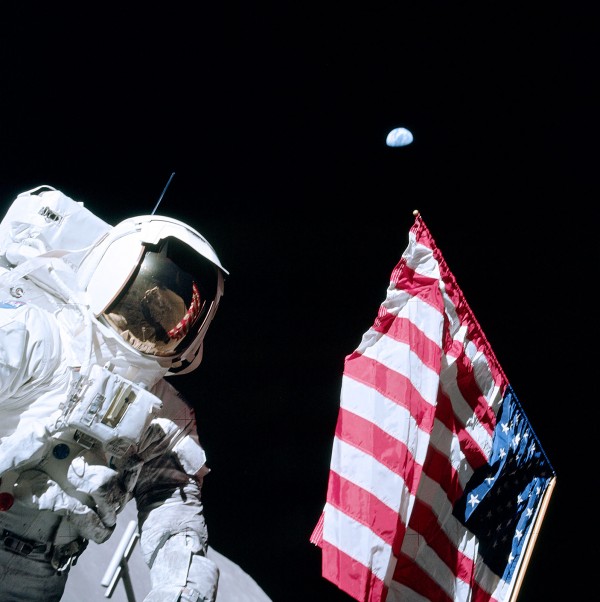
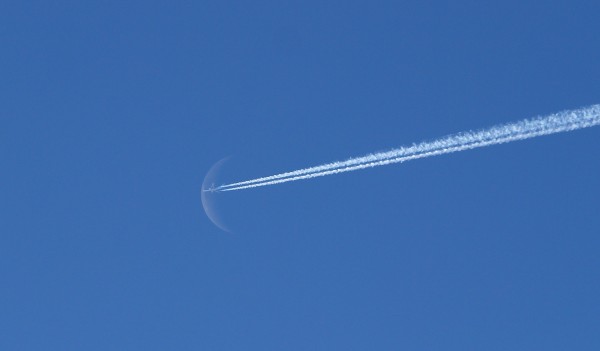
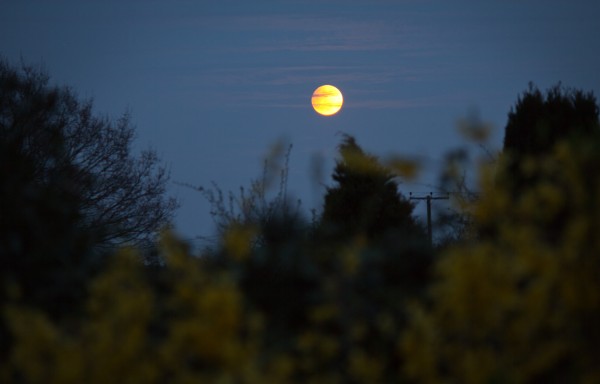
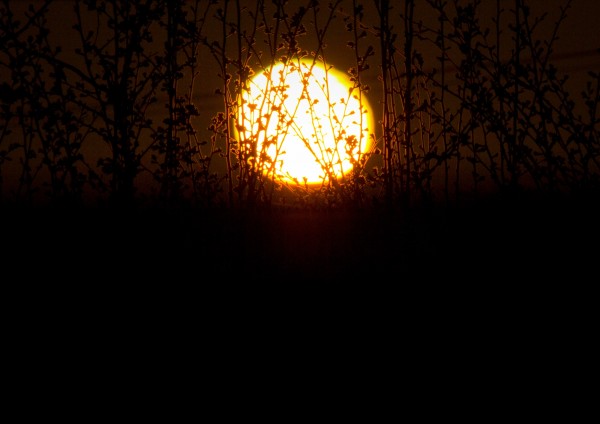
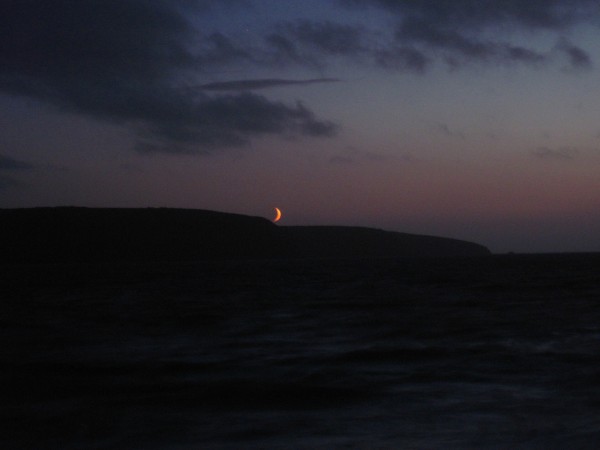
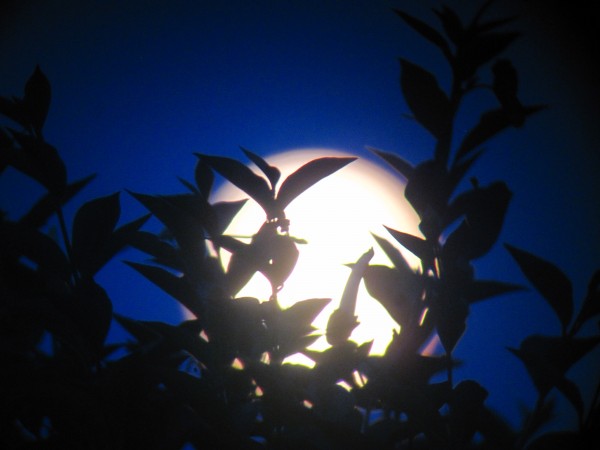
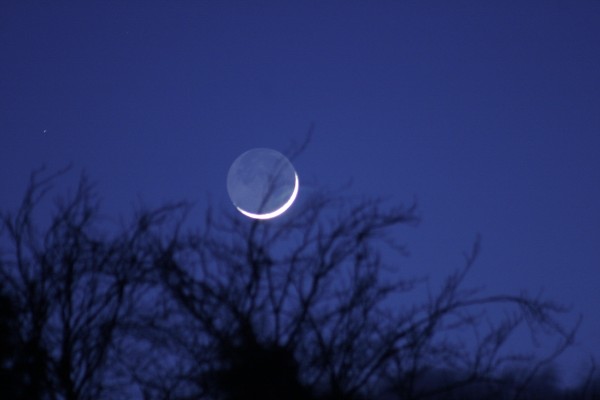
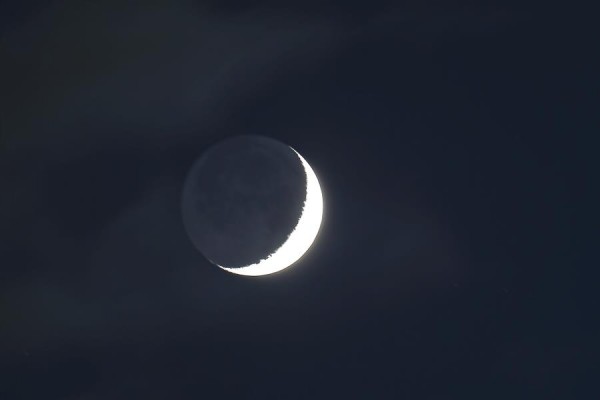
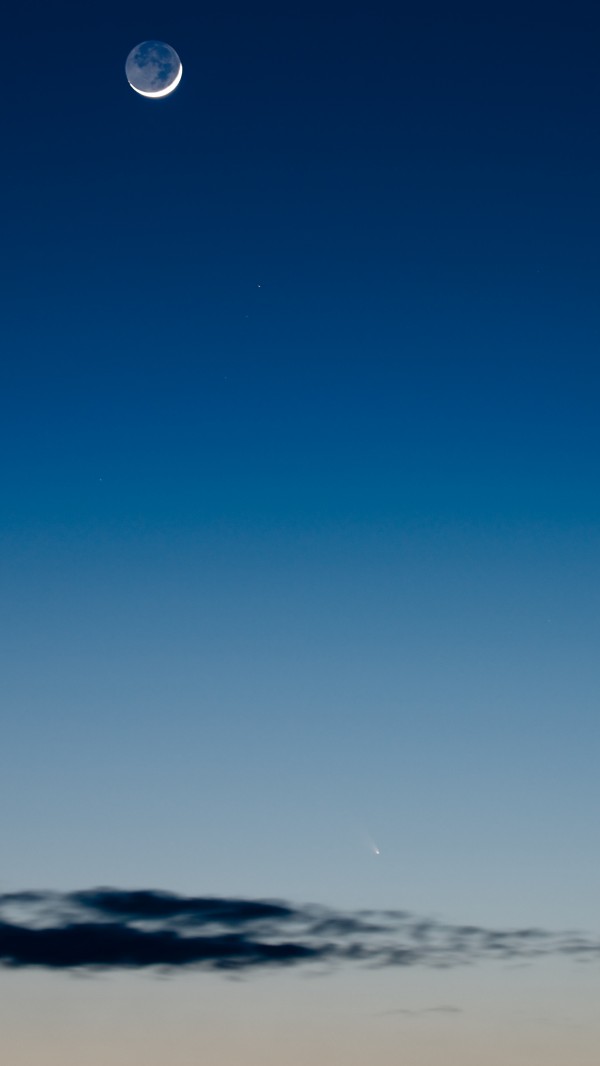

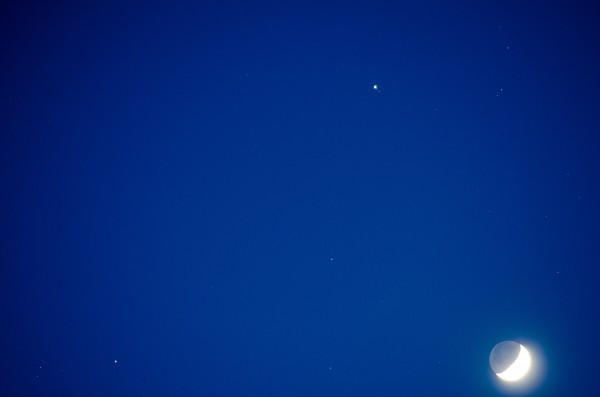
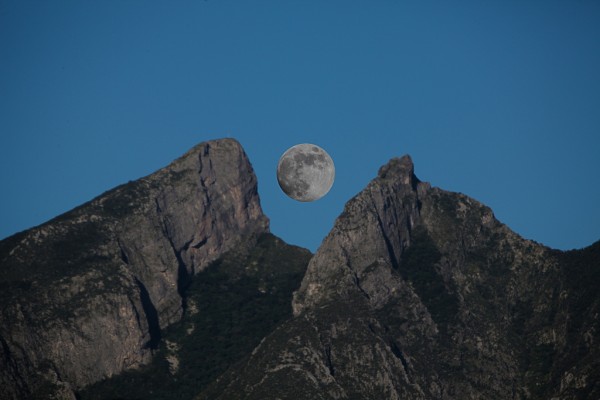
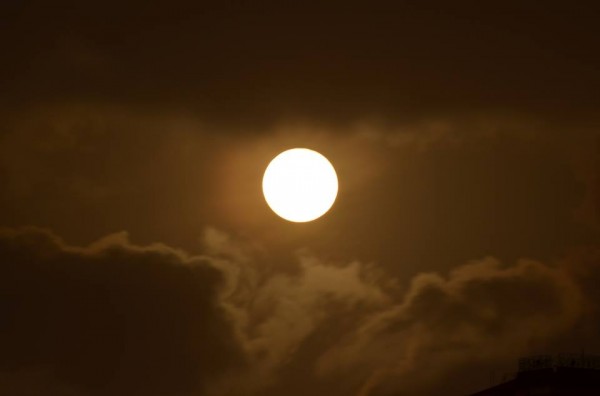
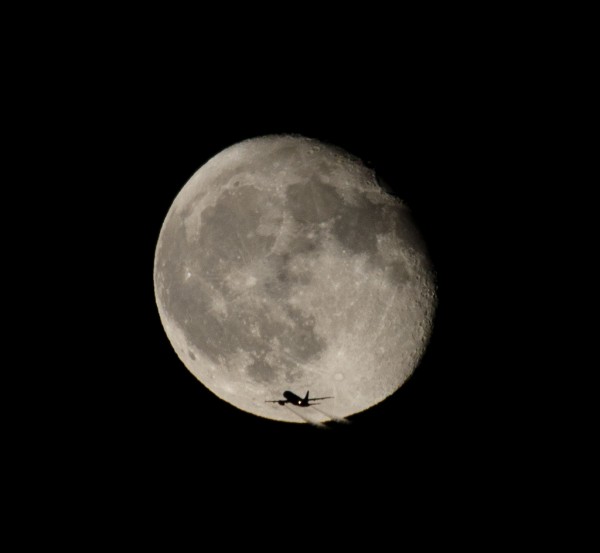
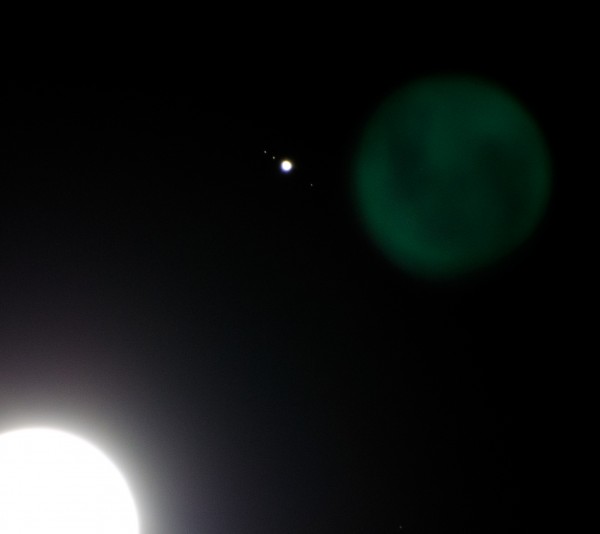
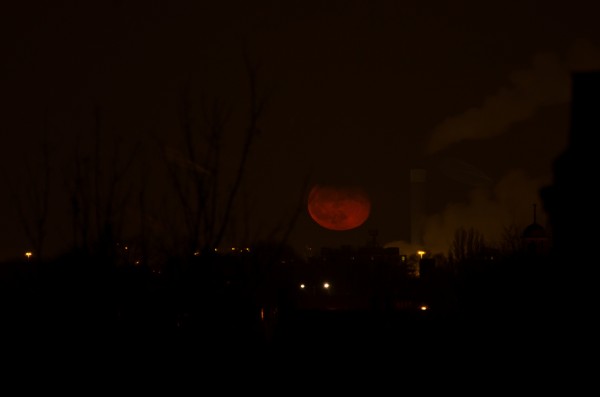
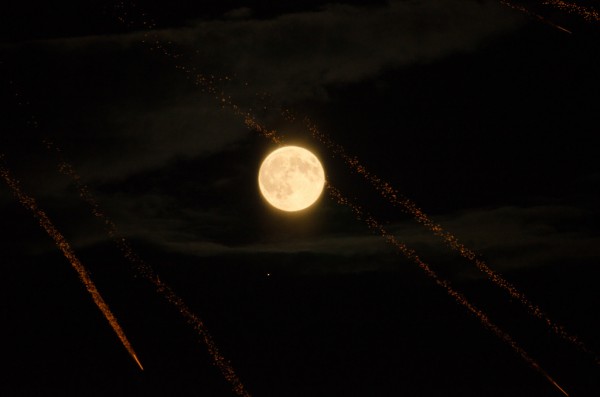
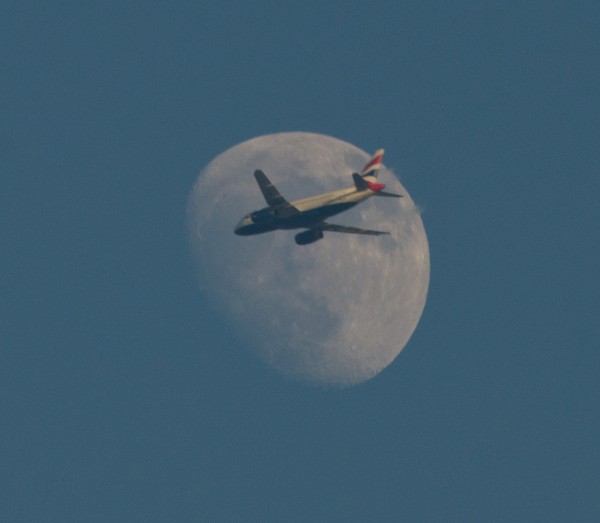
Thank you for sharing these photo's Ethan. They're incredible.
Impressive photos indeed. However, I'm suspicious that #97 is a Photoshop. The light just seems wrong. There are shadows on the mountains that indicate that the sun is shining partly from the left. The moon appears to have the sun shining partly from the right. The depth of field is enormous and there is not enough color or atmospheric haze to the moon. I could be wrong, but all of the other photos here look real, while that one seems wrong.
Ok, #97 is definitely a Photoshop. If you run a line scan across the moon you'll find that the darker areas of the moon are darker than the sky. Since the sky is a light source between the moon and the camera, that's not possible. A bit of a shame considering how much work other photographers did to get the other shots.
It depends where the Horizon is.
If the Moon is really low down on the horizon for this shot, then it's possible it's genuine.
Sorry, counted wrong. I was thinking you were talking about the last photo.
#97 is either faked or HEAVILY modified. You CAN run a contrast tool over objects to bring them forward, so your otherwise correct comment about the dark bits of the moon being darker than the sky isn't proof in itself.
If you follow the link to Cesar's site -- http://www.astrophoto.com.mx/picture.php?%2F303%2Fcategory%2F15 -- you'll find that it says "imagen compuesta," which is Spanish for composite image.
So it is likely two separate images stitched together, which makes the image no less spectacular, but, unfortunately, less genuine than what I was hoping for.
Agree with both that it's probably a composite. But it might not be. You actually need pretty fast shutter speeds for moon. It's exceptionally bright as it turns out. A bit counter intuitive in terms of other sky objects ;)
So to get the full moon that dark (not counting aperture size), IMO it's shot around 1/100 - 1/500s. It seems pretty low, so it might be early in the evening. With just right amount of sunlight and perfect clear skies, you might get something like this where both mountains and the moon are properly exposed.
I saw Cantu's photograph #97 and immediately thought "Cerro de la Silla" ("Saddle Mountain"), the symbol of Monterrey, the third largest city in México. I checkd the link and it turned out I was right. Here you can see a nice nocturnal view of Cerro de la Silla from downtown Monterrey: http://www.ur.mx/Portals/7/CENTRO%20DE%20MONTERREY.jpg